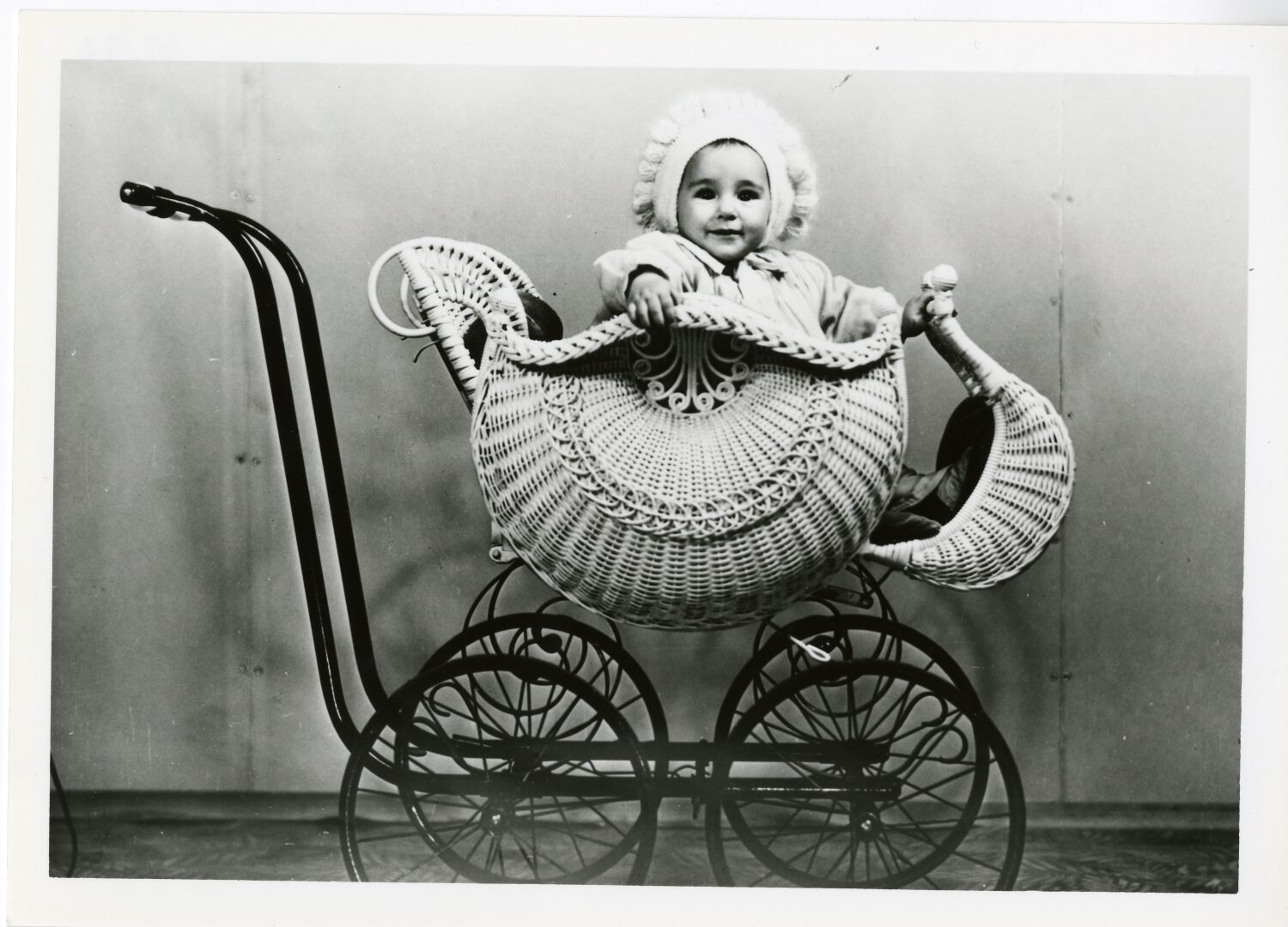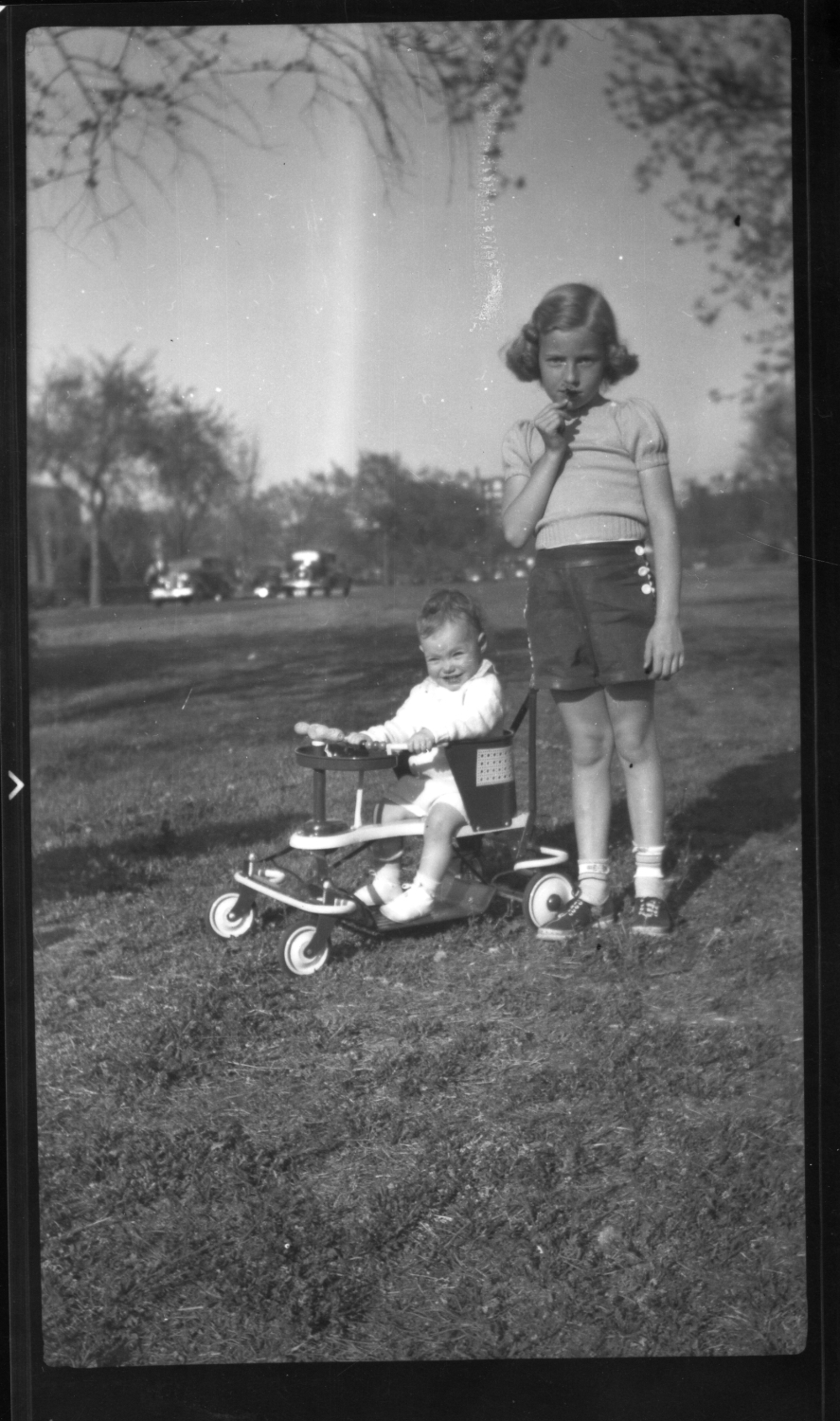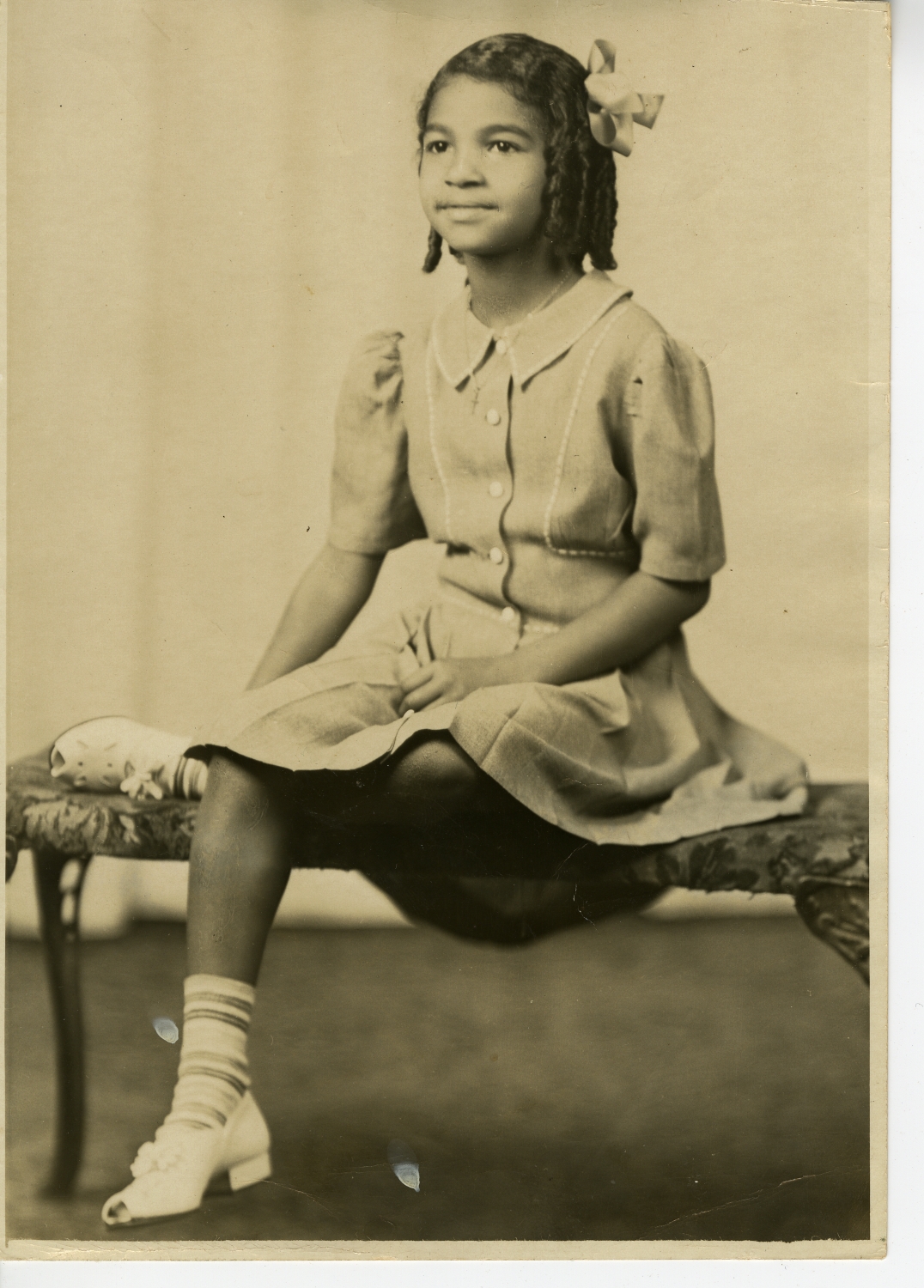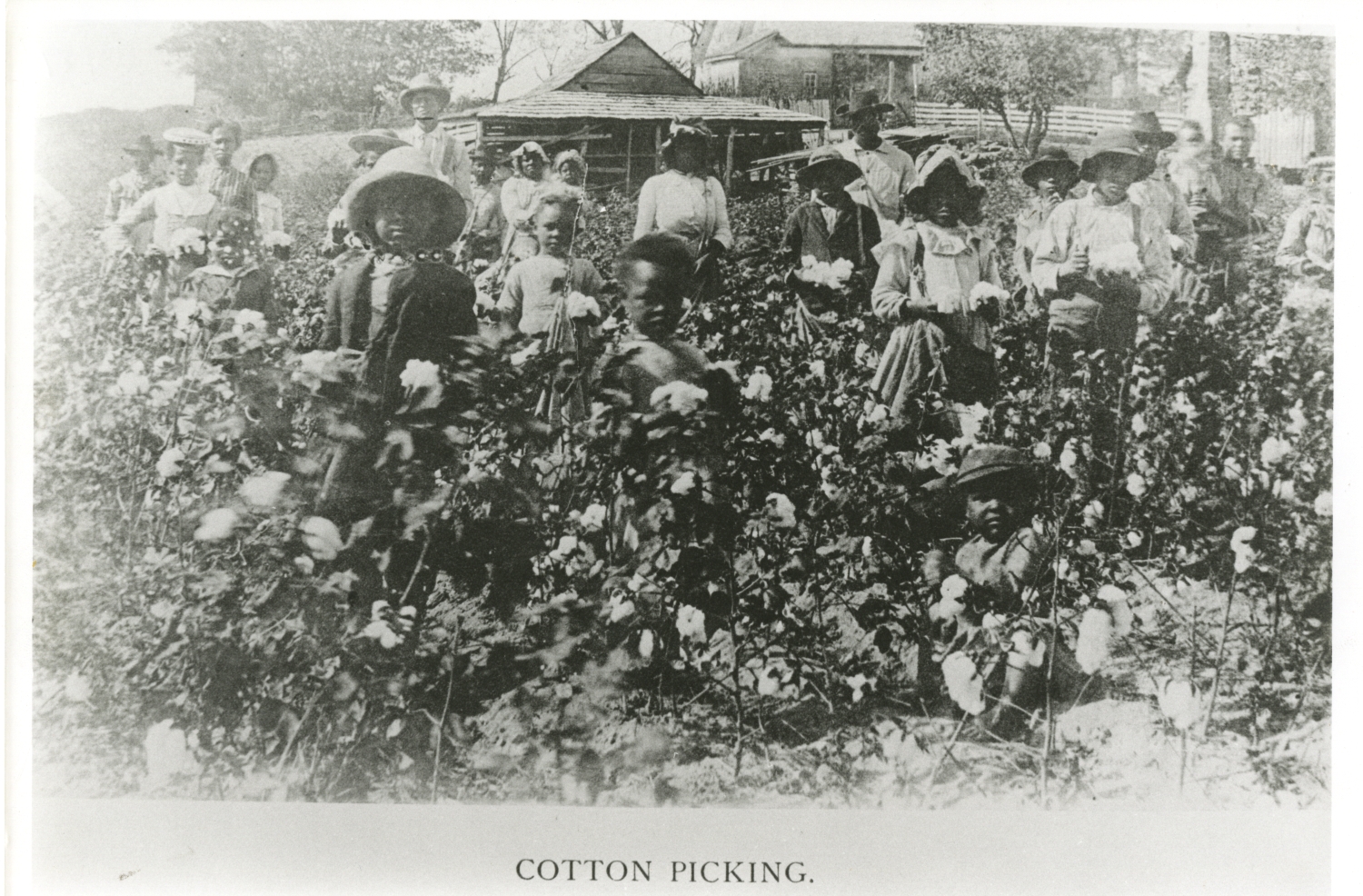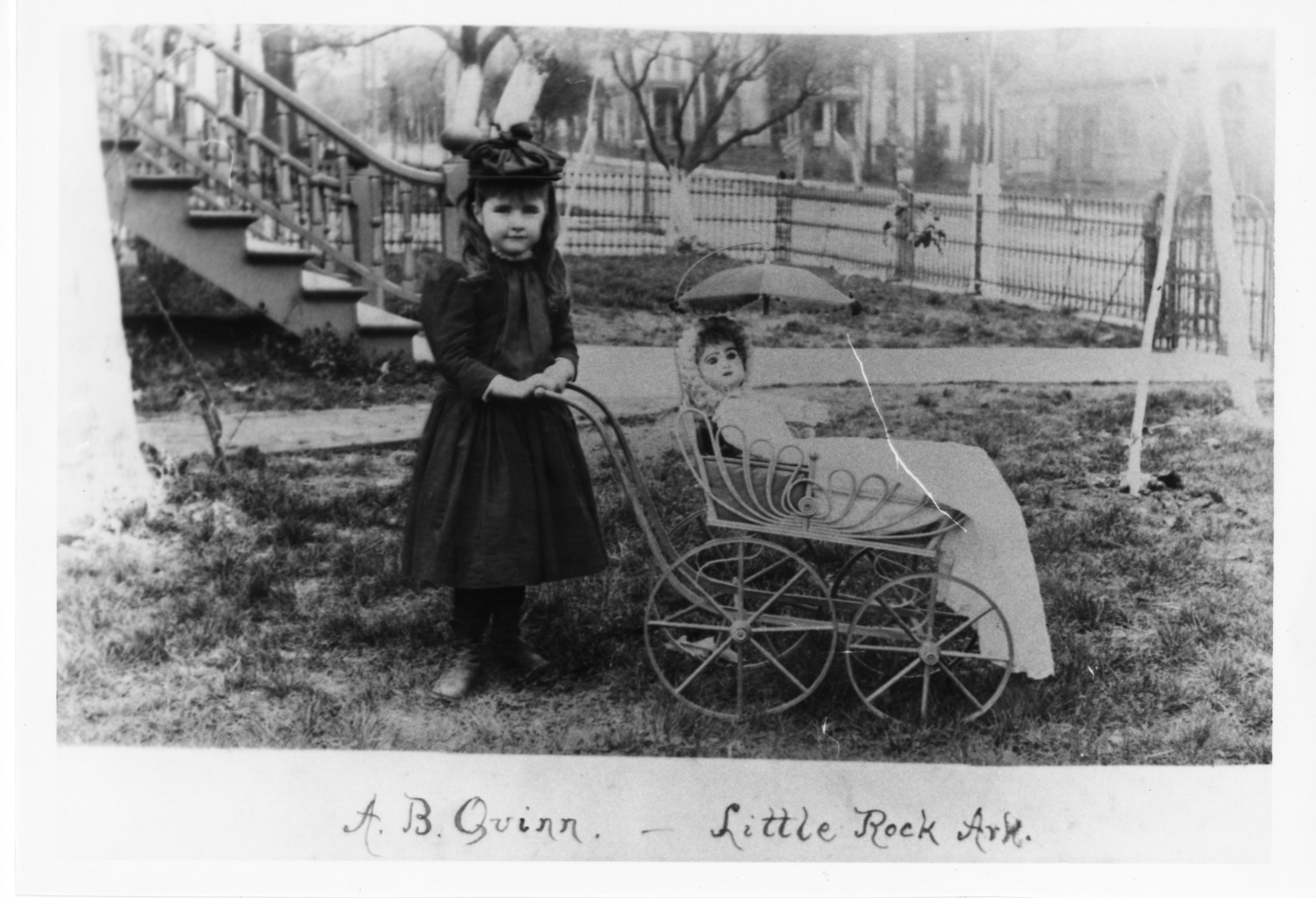Introduction
In this activity, you will look at eight old black and white photos of children and compare them to children today. These photos will help us learn how a child’s life changed over time.
Activity Questions
Jim Guy Tucker on toy
- What are the babies in Photos 1 and 2 doing?
- The boy who is sitting on a toy with wheels in Photo 1 is named Jim. Does Jim’s toy remind you of any toy that babies use today?
- Does the stroller in Photo 2 look like strollers today?
- Do you think the baby in Photo 2 looks comfortable and happy in her stroller?
Unidentified woman in dress
- What are the children in Photos 3 and 4 wearing?
- Are these clothes like the clothes that children wear today or are they different?
- Would you like to wear similar clothes today?
Workers picking cotton
- Find children in Photos 5 and 6. How old do you think they are?
- These photos were taken more than one hundred years ago. At the time, it was common for children as young as 5 or 6 years old to work all day instead of going to school. The children like the ones you see in these two photos worked very hard. The children in Photo 5 are picking cotton and the children in Photo 6 are holding berries that they picked. They worked all day, even when it was very hot. Do children work in the same way today?
- In the United States, there are laws that protect children because children should go to school every day and not to work. But in many countries around the world children that are the same age as you are still forced to work. What do you think we could do to protect children and make sure that they go to school and not to work?
- Do you help your family with any type of work? If yes, what kinds of work do you do?
A. B. Quinn with doll carriage in Little Rock
- What are the children in Photos 7 and 8 doing?
- Do the stroller and the doll in Photo 7 look like toys that children play with today? Would you want to play with this stroller and the doll?
- Do the children in Photo 8 look happy or sad?
- Which of the two photos was taken first (is older) and which one was taken second?
Additional Questions
After you look at and describe all the eight photos, answer the following questions:
- How are the children in the photos different from children today?
- How are the children in the photos similar to children today?
- Not all the children in these eight photos had the same life. Some of them looked happy, wore pretty clothes, and had nice toys. Others had to work very hard. Do all children today have the same lives?
Primary Sources
To learn more about the primary sources featured in the activities above, click the following links:
Arkansas Social Studies Standards
Social Studies (History)
- Strand: History
- Content Standard 12: Chronology, Change Over Time, and Contextualization – Students will analyze chronology, patterns of continuity and change over time, and contextualization on historical events.
- Kindergarten
- H.12.K.3: Compare a child’s life of the present to that of the past using visual representations (e.g., growing food, rules and laws, making clothing, transportation, communication)
- Grade 1
- H.12.1.3 Compare present day families, objects, and events with those in the past using visual representations, news stories, and artifacts (e.g. daily life tasks, food, clothing, transportation, communication, recreation)
- Grade 2
- H.12.2.3 Compare life in your community past and present using maps, photographs, news stories, artifacts, or interviews (e.g. transportation, communication, recreation, jobs, housing)
More Information
N/A
Downloadable Guides and Handouts
We encourage K-12 educators to use History Alive: Virtually! in a way that will best match their classroom needs. The “Exercise” handout includes a complete exercise as featured on this website, the “Primary Sources” handout includes only primary sources used in the exercise, and the “Questions” handout includes analytical questions from the exercise but is editable and can be easily changed to best match students’ needs.
Change Over Time (Child’s Life) – Exercises

